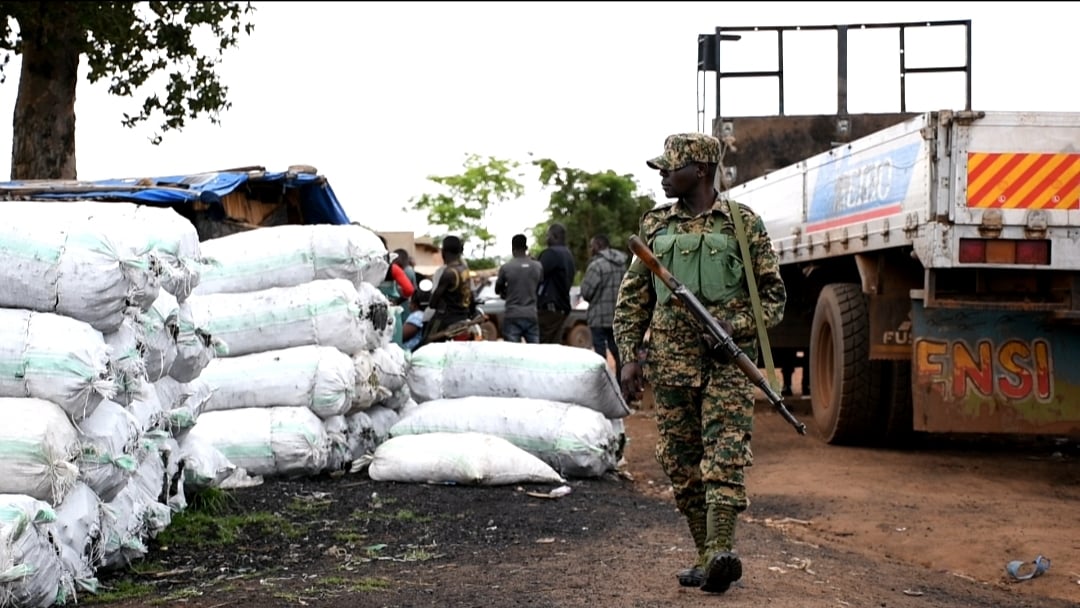Prime
Charcoal ban sparks questions on options

A Uganda People’s Defence Forces soldier at one of the charcoal camps at Apaa Junction in Mungula Parish, Itirikwa Sub-county in Adjumani District on April 18, 2023. PHOTO | TOBBIAS JOLLY OWINY
What you need to know:
- In the urban areas, 65.7 percent of the households use charcoal, while 33.4 percent use firewood for cooking. On average, a household spends more (Shs2,015) on the main cooking fuel per day during the wet season than in the dry season (Shs1,942).
President Museveni’s new ban on charcoal burning and trade in northern and northeastern Uganda has revived debates about the ability of the country to live without wood fuel.
Environmentalists and leaders said whereas blacklisting the business which destroys nature is great, lack of affordable alternative energy sources for household needs is likely to stymie implementation of the Executive Order ban on charcoal.
Uganda’s forest cover declined by 11 percentage points from the 1990 to 2022, according to Mr Stephen Mugabi, the acting director for environment affairs at the Ministry of Water and Environment.
The charcoal ban comes barely two weeks after the President met leaders from Acholi Sub-region, who raised desertification fears in the sub-region over rampant felling of trees for charcoal trade.
“To me, the ban is a good thing,” Mr Frank Muramuzi, the executive director of National Association of Professional Environmentalists, said. “What has been happening was that trees were being cut indiscriminately,” he added.
Mr Muramuzi said Ugandans can use other energy sources such as gas, electricity and fire wood instead of charcoal.
However, Mr Emely Kugonza, the vice chairperson of Parliament’s Committee on Environment and Natural Resources, said although the move is in the right direction, the country is not prepared.
“People are going for an archaic method of cooking with charcoal and firewood because [prices of] electricity and gas are out of reach. We must come up with strategies to ensure electricity and gas are cheap,” Mr Kugonza, also the Buyanja East MP, said.
The government last June launched an ambitious project to give out up to one million gas cylinders to households, but progress of distribution has been limited, leaving financially-squeezed families to rely on charcoal and firewood for cooking despite risks of pollution and infection from inhalation of pollutants.
In addition, electricity access is low due to poor distribution and high prices.
According to the latest national charcoal survey conducted in 2015 by the government, charcoal is mainly consumed in urban areas, while firewood is mostly used in rural areas.
The study found that the main source of wood for charcoal production in Uganda is from privately-owned forests (43 percent), followed by central forest reserves (22 percent), on farm trees (20 percent) and others (14 percent).
“The survey indicates that central (40.9 percent) and northern regions (39.5 percent) are the major sources of charcoal. Furthermore, central region is the main source of charcoal supplied to Kampala (63.4 percent), followed by northern region (21.8 percent),” the report reads.
Mr Muramuzi said focusing on the northern part of the country wouldn’t solve the problem of deforestation. He said communities should start acting like Acholi leaders so as to protect their environment, by pushing for conservation.




